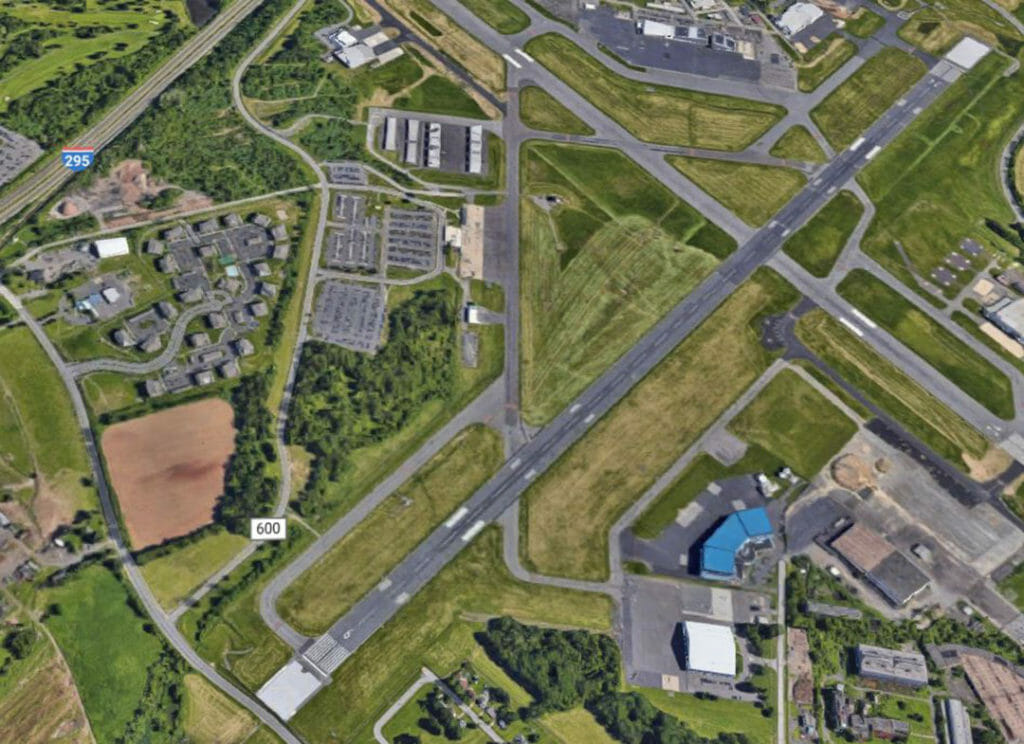
Trenton–Mercer Airport (TTN) is a county-owned, joint civil–military, public airport located four miles northwest of Trenton in the West Trenton section of Ewing Township, Mercer County, New Jersey, United States. The airport serves one scheduled airline plus general and corporate aviation. Trenton–Mercer Airport covers 1,345 acres (544 ha) at an elevation of 212 feet (65 m) above mean sea level. It has two asphalt runways: 6/24 is 6,006 by 150 feet (1,831 x 46 m) and 16/34 is 4,800 by 150 feet (1,463 x 46 m). The airport has three helipads, H1, H2, and H3, each 64 by 64 feet (20 x 20 m).
Taxiways A, C and, J provide an important role in providing access for the airport users at Trenton-Mercer Airport. These taxiways have deteriorated and aged to the point where there was an immediate need for rehabilitation. This project proposed to repair and rehabilitate these taxiways while extending the useful life of the pavement section. The approximate length of these taxiways total 7,634 feet (Taxiway A – 3,600 ft x 75; Taxiway C – 1, 52 ft. x 75; and Taxiway J – 2,464 ft. x 75). The rehabilitation project primarily consisted of repairing cracks, reconstructing major portions of the taxiway that had failed, milling the top surface course, and providing an overlay of the taxiways with bituminous pavement. Portions of the airfield required the alteration of taxiway fillets, paving beyond the taxiway edges to meet the terminal apron and the removal of excessive taxiway pavement that is no longer useful for the circulation of aircraft.
Portions of Taxiway Alpha, located toward the south and in the vicinity of the taxiway J intersection required reconstruction. In addition, there was a large area of pavement removed at the intersection, which was no longer required from an operational standpoint. The pavement was removed between the intersections of Taxiway J and Runway 6-24. In addition, a portion of the taxiway south of the Runway 6-24 intersection was removed and reconstructed to provide a straight crossing of the runway, removing an existing “jog” in the taxiway. The construction included the removal of an exit taxiway and elimination of the need to “back taxi” onto Runway 6. The remainder of the taxiway was rehabilitated through an extensive crack repair and a bituminous overlay program.
C was a 150’ wide runway that was converted into a 75’ taxiway, using taxiway side stripe marking and by installing a painted cross over Runway numerals. Taxiway C required a full reconstruction of the entire taxiway section, including the removal of the existing pavement section. This taxiway also required the removal of the existing impervious surface along both sides of the taxiway where the old runway pavement was still present. The pavement along the edges of Taxiway C was removed and replaced with topsoil and turf to reduce the total impervious surface of the airport. In addition, the north end of taxiway C, located north of the Runway 24 intersection, was removed under this project and replaced with topsoil and turf. A fairly large portion of pavement was added to the taxiway C fillet, at the intersection of the Runway to provide a proper turning radius for exiting aircraft from the Runway to Taxiway C.
Taxiway J is a partial parallel taxiway to Runway 6-24. The majority of this taxiway was milled and overlaid. Portions of the taxiway required reconstruction due to sub-grade conditions or grading matters. A major portion of the reconstruction occurred at the intersection to Runway 6.
All of the pavement work required the appropriate grading of drainage swales, such that these facilities were located beyond the taxiway safety areas. The construction addressed this issue by relocating existing drainage facilities beyond the taxiway safety areas, promoting a safer environment, and providing suitable safety areas adjacent to the taxiway edges.
DY provided engineering design services, construction management, inspection, and QA/QC services for this project.
